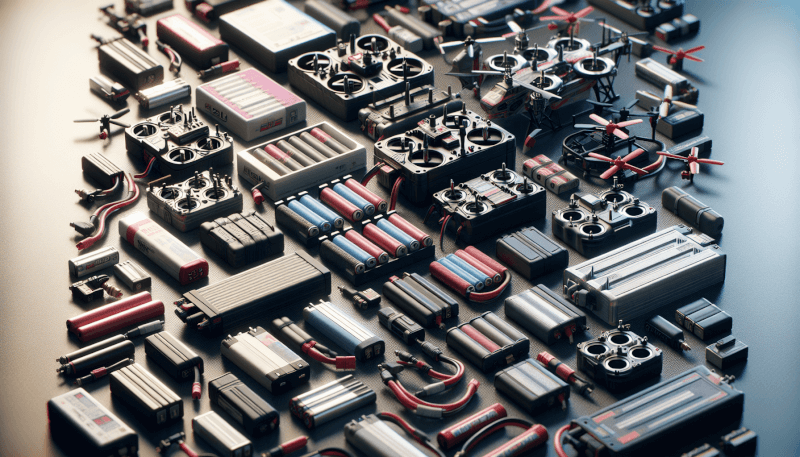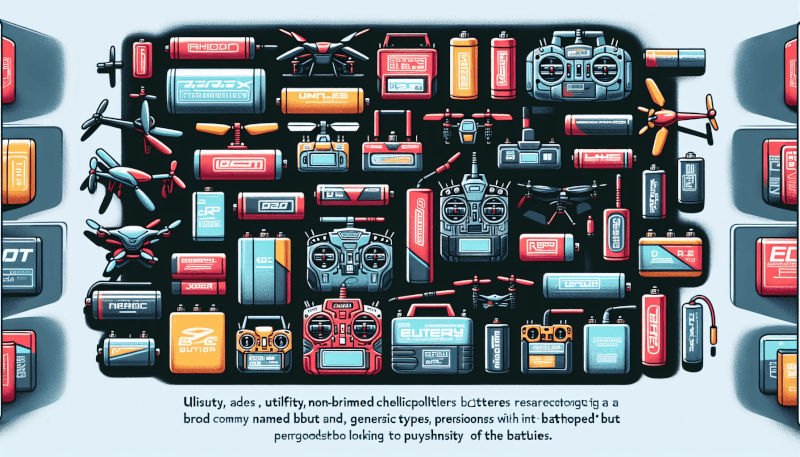Welcome to the ultimate RC heli battery buying guide! In this article, you will learn everything you need to know about choosing the right battery for your remote control helicopter. From understanding different battery types to determining the correct size and capacity for your heli, we’ve got you covered. Whether you’re a beginner or a seasoned RC enthusiast, this guide will help you make the best choice for powering your helicopter for optimal performance and maximum fun. Let’s dive in and find the perfect battery for your RC heli adventure! Have you ever wondered how to choose the best battery for your RC helicopter? With so many options available on the market, it can be overwhelming to know which one is the right choice for you. In this comprehensive guide, we will walk you through everything you need to know about RC heli batteries, from understanding the different types to selecting the perfect one for your specific needs. Let’s dive in and discover all the tips and tricks to make sure you get the most out of your RC heli flying experience.
Types of RC Heli Batteries
When it comes to RC heli batteries, there are several types to choose from. Each type has its own set of characteristics, advantages, and disadvantages. Understanding the differences between them will help you make an informed decision when selecting the best battery for your RC helicopter.
Nickel-Cadmium (Ni-Cd) Batteries
Nickel-Cadmium batteries are one of the oldest types of rechargeable batteries used in RC helicopters. They are known for their ability to deliver high power output and excellent performance in extreme temperatures. However, Ni-Cd batteries have higher self-discharge rates and memory effect, which means they need to be fully discharged before recharging to maintain their capacity.
If you are looking for a budget-friendly option that can handle high drain applications, Ni-Cd batteries might be the right choice for you. Just be mindful of the maintenance required to ensure their longevity.
Nickel-Metal Hydride (Ni-MH) Batteries
Nickel-Metal Hydride batteries are a popular choice for RC heli enthusiasts due to their higher capacity and lower self-discharge rates compared to Ni-Cd batteries. They are environmentally friendly and do not suffer from memory effect, making them easier to maintain and more user-friendly.
Ni-MH batteries are a good option for beginners or casual users who want a reliable and affordable power source for their RC helicopters. They offer a balance between performance and cost, making them a versatile choice for a wide range of flying scenarios.
Lithium Polymer (LiPo) Batteries
Lithium Polymer batteries are the most widely used type of batteries in the RC hobby industry today. They are lightweight, compact, and capable of delivering high power output, making them ideal for high-performance RC helicopters. LiPo batteries have low self-discharge rates and do not suffer from memory effect, making them low maintenance and easy to use.
If you are serious about flying your RC heli and want the best performance possible, LiPo batteries are the way to go. Just keep in mind that they require special care and handling due to their high energy density and can be dangerous if mishandled.
Lithium-Ion (Li-Ion) Batteries
Lithium-Ion batteries are similar to LiPo batteries in terms of performance and characteristics. However, they are more stable and have a longer lifespan, making them a reliable option for RC helicopter enthusiasts who prioritize safety and longevity.
Li-Ion batteries are a good choice for those who want a balance between performance and safety, without compromising on power output and capacity. They are a bit heavier and bulkier than LiPo batteries but offer better stability and durability in the long run.

Factors to Consider When Choosing an RC Heli Battery
Now that you know the different types of RC heli batteries available, it’s time to consider the factors that will help you choose the best one for your specific needs. Here are some key considerations to keep in mind when selecting an RC heli battery:
Capacity
The capacity of an RC heli battery refers to the amount of energy it can store and deliver. It is measured in milliampere-hours (mAh) and determines how long your RC helicopter can fly on a single charge. Higher capacity batteries will allow for longer flight times, but they may also be heavier and more expensive.
When choosing an RC heli battery, consider the size and weight of your helicopter, as well as your flying style and preferences. A higher capacity battery is ideal for long flights and high-performance maneuvers, while a lower capacity battery may be sufficient for casual flying or indoor use.
Voltage
The voltage of an RC heli battery is another important factor to consider when selecting the right power source for your helicopter. Most RC helicopters require specific voltage levels to operate efficiently and safely. It is essential to match the voltage of the battery to the requirements of your helicopter to avoid damage and maximize performance.
Check the manufacturer’s specifications for your RC helicopter to determine the recommended voltage range. Select a battery with the appropriate voltage rating to ensure compatibility and optimal performance during flight.
Discharge Rate
The discharge rate of an RC heli battery indicates how quickly it can deliver power to the motor and electronics of your helicopter. It is measured in “C” ratings and determines the maximum current output of the battery. A higher discharge rate allows for faster acceleration, higher top speeds, and better overall performance of your RC helicopter.
Consider the discharge rate requirements of your helicopter’s motor and electronic components when choosing an RC heli battery. Select a battery with a discharge rate that matches or exceeds the manufacturer’s recommendations to ensure smooth and reliable operation during flight.
Size and Weight
The size and weight of an RC heli battery can impact the balance, handling, and flight characteristics of your helicopter. Choose a battery that fits securely in the battery compartment of your helicopter and does not affect its center of gravity.
Consider the dimensions and weight of the battery when making your selection. A compact and lightweight battery is ideal for agility and maneuverability, while a larger and heavier battery may be necessary for longer flight times and increased power output.

How to Care for Your RC Heli Battery
Proper care and maintenance of your RC heli battery are essential to ensure optimal performance, longevity, and safety. Follow these tips to keep your battery in top condition and prevent damage or accidents during flight:
Charging
When charging your RC heli battery, use a high-quality charger that is compatible with the battery type and specifications. Follow the manufacturer’s instructions for charging times, voltages, and current limits to avoid overcharging or undercharging the battery.
Monitor the charging process and do not leave the battery unattended while charging. Disconnect the battery from the charger once it is fully charged to prevent overheating, overcharging, or other potential hazards.
Storage
Proper storage of your RC heli battery is crucial to maintain its capacity and performance over time. Store the battery in a cool, dry place away from direct sunlight, moisture, and extreme temperatures. Avoid storing the battery in a fully charged or discharged state for extended periods to prevent damage and degradation.
Consider using a fireproof battery bag or storage container to safely store and transport your RC heli battery. Keep the battery away from flammable materials and ensure it is stored securely to prevent accidental damage or exposure to harmful conditions.
Handling
Handle your RC heli battery with care to prevent damage or accidents during use. Always remove the battery from your helicopter when not in use and store it in a safe location to avoid short circuits or physical damage.
Avoid bending, twisting, or puncturing the battery, as this can cause internal damage and compromise its performance. Inspect the battery regularly for signs of swelling, leakage, or damage, and discontinue use if any issues are detected.
Disposal
When it is time to dispose of your old or damaged RC heli battery, follow the proper disposal guidelines to protect the environment and prevent contamination. Do not throw the battery in the trash or expose it to heat, fire, or moisture, as this can cause a dangerous chemical reaction or release toxic fumes.
Contact your local recycling center or hazardous waste facility for information on how to safely dispose of your RC heli battery. Consider investing in a battery recycling program or service to ensure environmentally responsible disposal of your old batteries.

Conclusion
Choosing the right RC heli battery is essential for maximizing the performance, longevity, and safety of your remote-controlled helicopter. By understanding the different types of batteries available, considering key factors when selecting a battery, and following best practices for care and maintenance, you can enjoy hours of flying fun and excitement with your RC heli.
We hope this comprehensive guide has provided you with valuable insights and tips to help you make an informed decision when choosing an RC heli battery. Remember to fly safely, have fun, and always prioritize the quality and reliability of your power source for the best RC heli flying experience. Happy flying!



